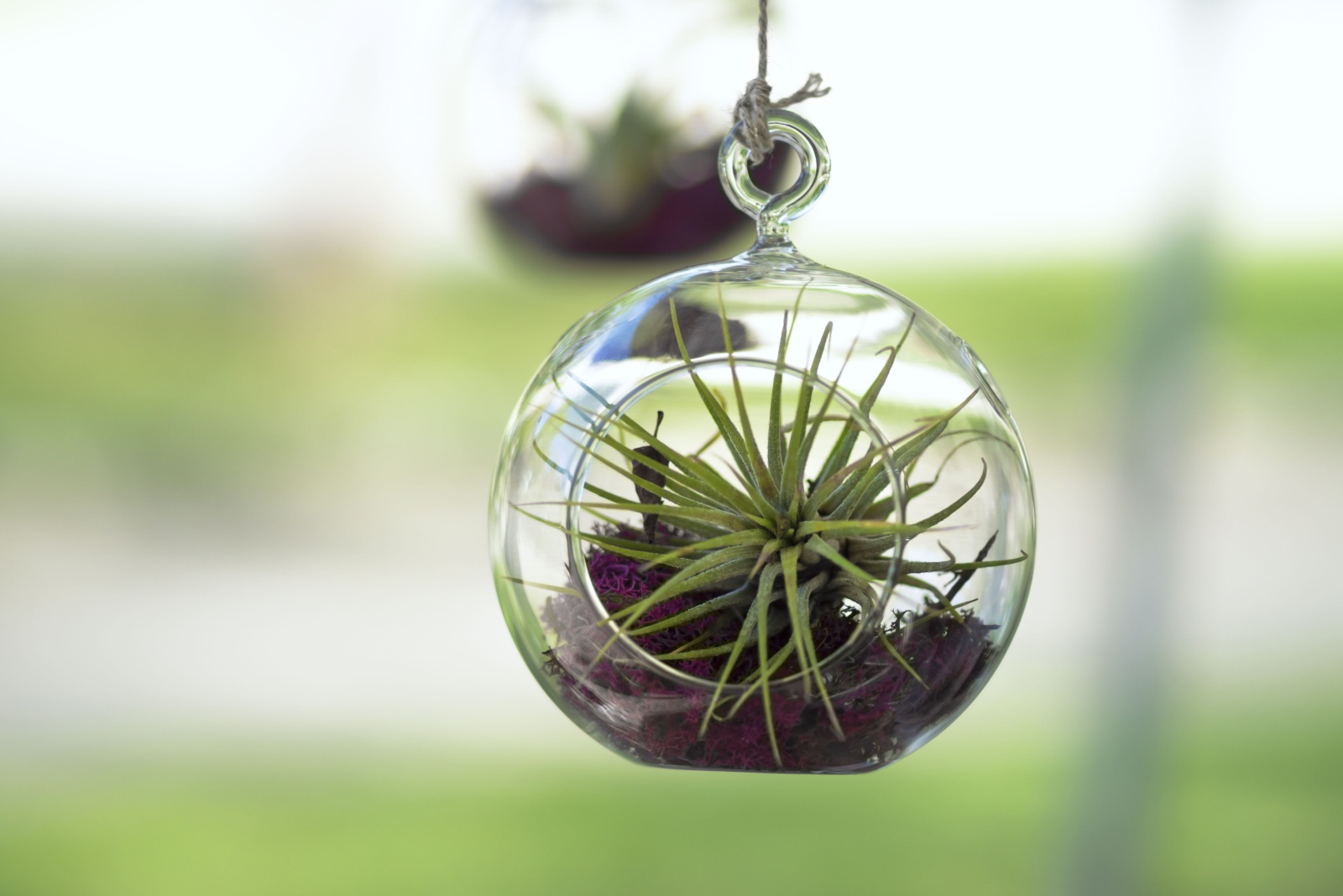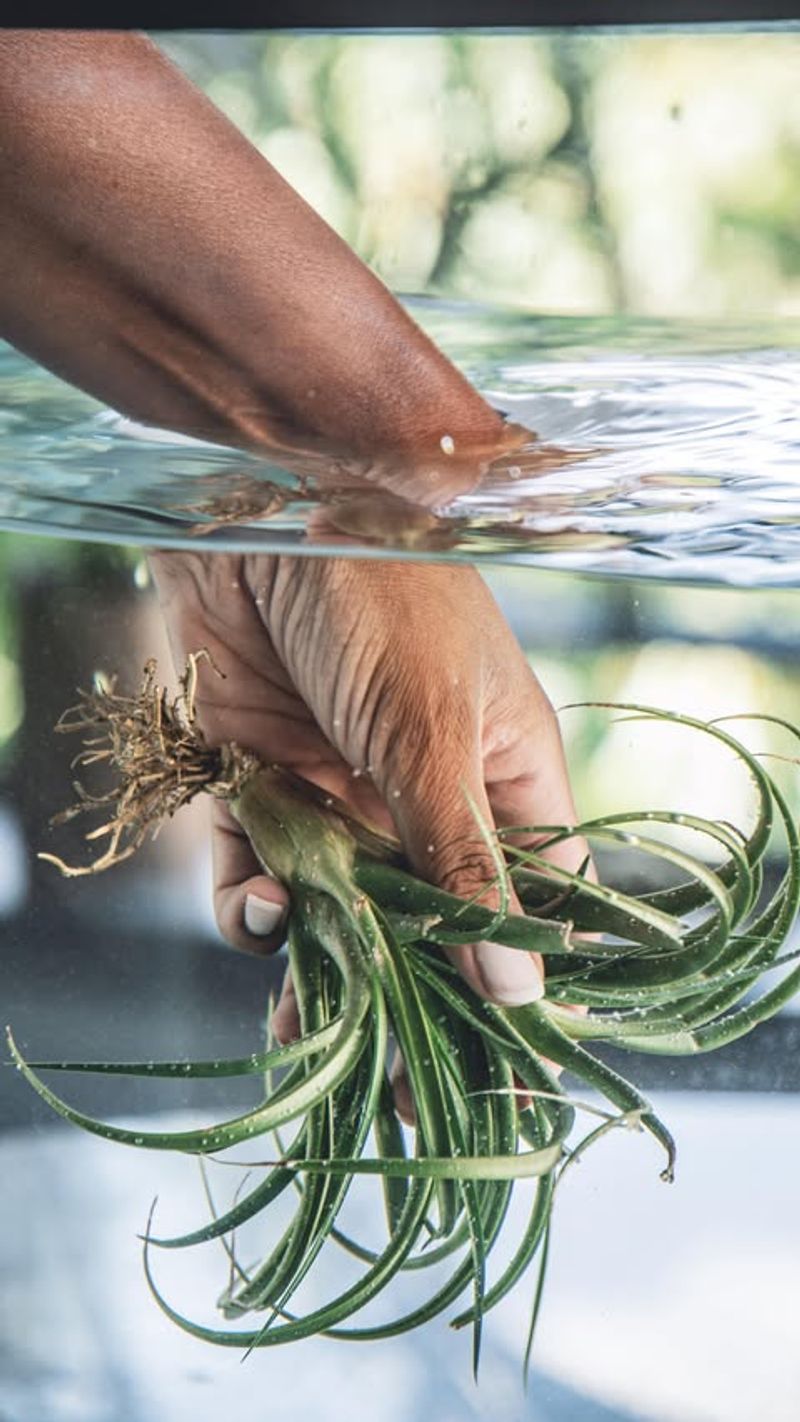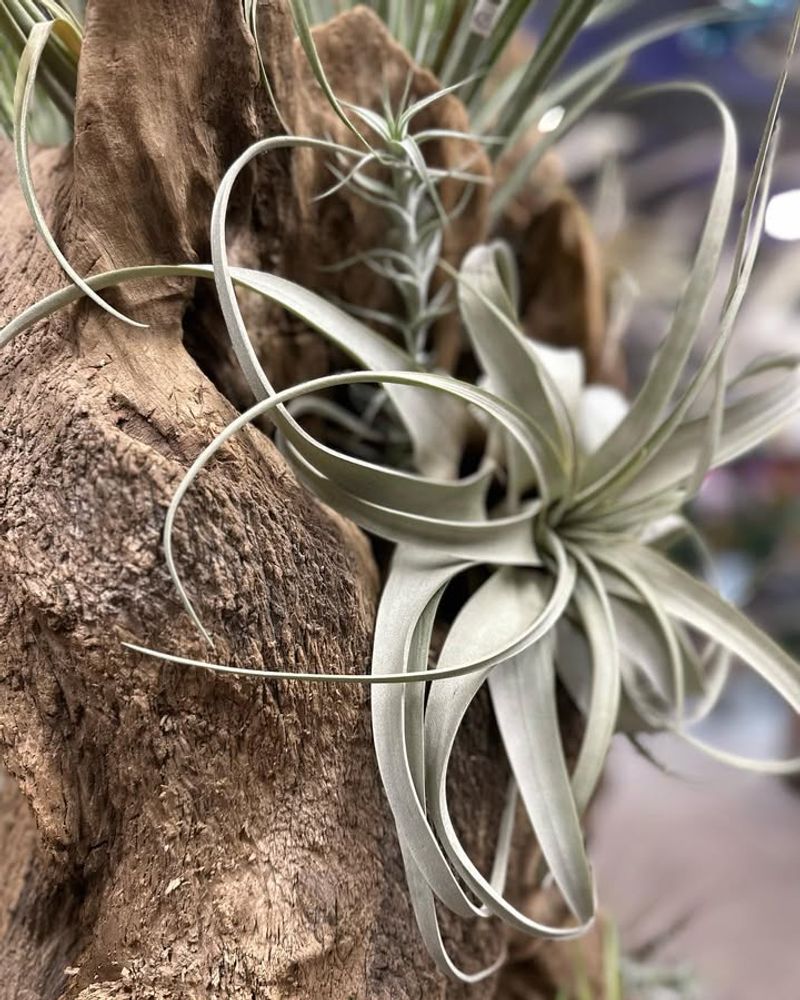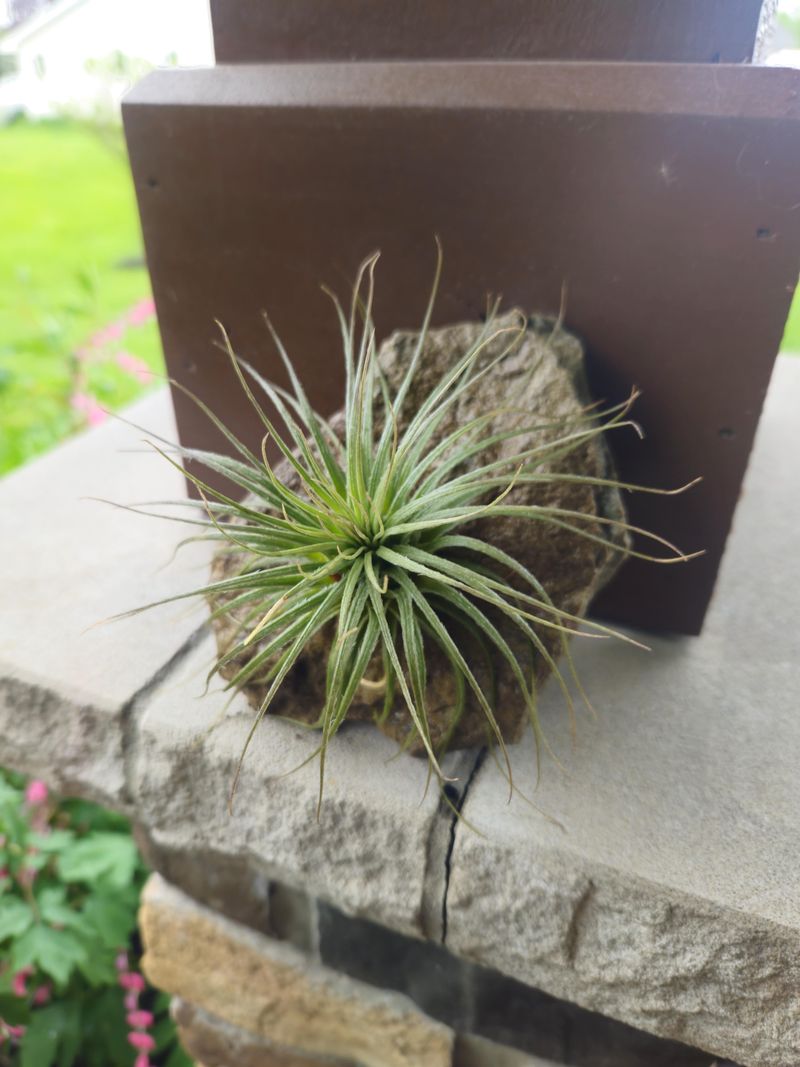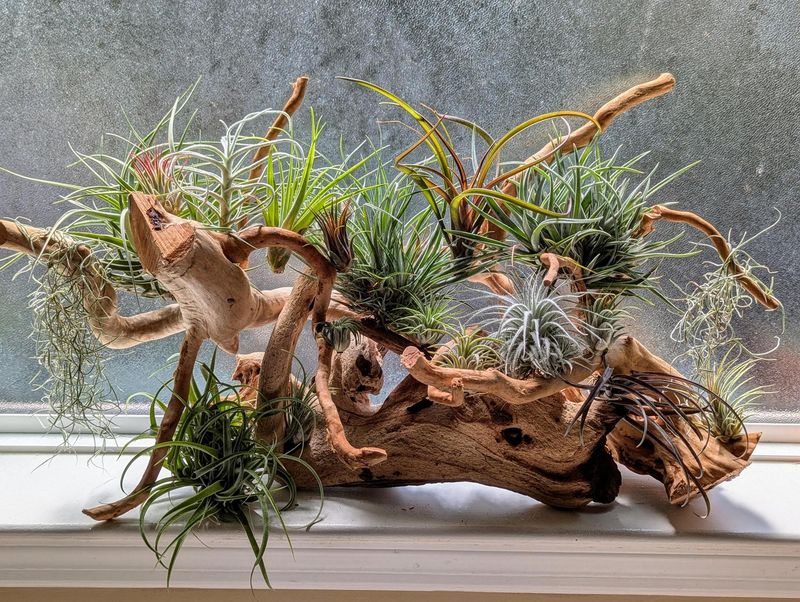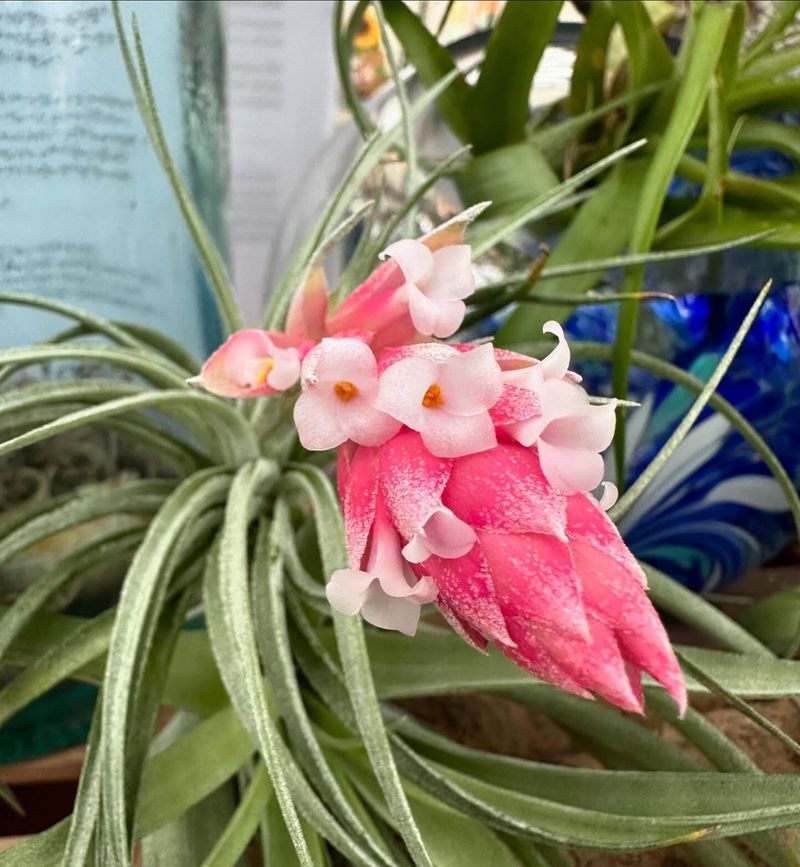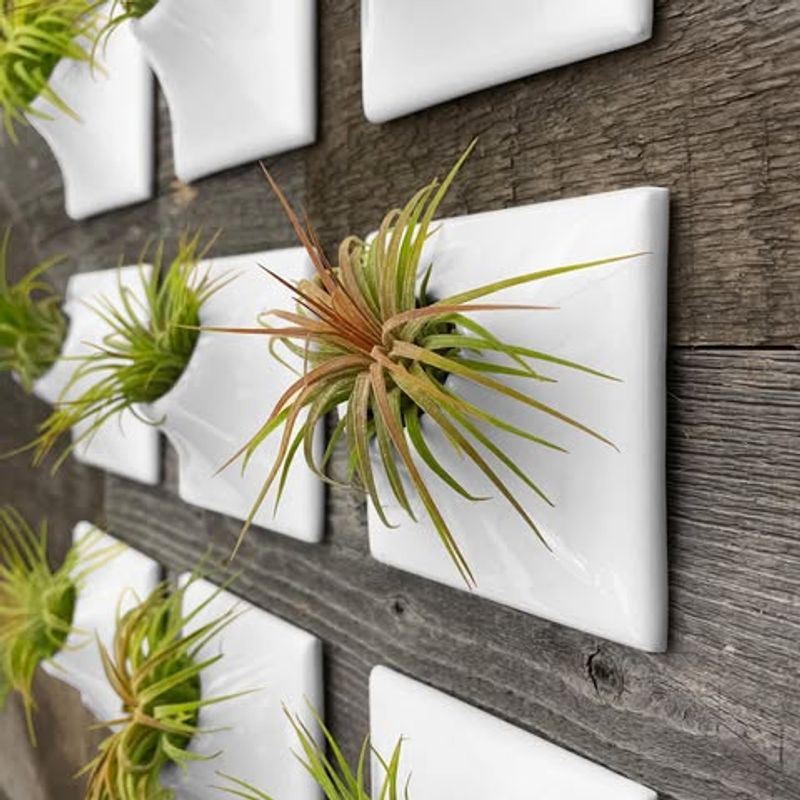Air plants have captured the hearts of Pennsylvania gardeners with their unique look and low-maintenance reputation. These fascinating plants don’t need soil to thrive, making them perfect for creative indoor displays during our harsh winters.
But many local plant enthusiasts discover there’s more to these trendy tillandsias than meets the eye, especially when growing them in our northeastern climate.
1. Pennsylvania’s Dry Winter Air Is The Enemy
Most air plants naturally grow in humid tropical environments, which is the exact opposite of a Pennsylvania home during winter heating season. When the furnace kicks on, indoor humidity plummets, leaving these moisture-loving plants gasping.
Many first-time owners don’t realize they’ll need to mist their plants daily or set up humidity trays during winter months. A bathroom with a shower can become your air plant’s favorite vacation spot, giving it the steamy environment it craves.
2. Watering Techniques Matter More Than You Think
Contrary to popular belief, misting alone isn’t enough for air plants in our climate. Pennsylvania gardeners often learn this lesson the hard way when their supposedly “easy” plants start turning brown at the tips.
Successful growers use the “dunk method” – submerging plants completely in water for 20-30 minutes weekly. After their bath, turn them upside down and gently shake excess water from the base. Standing water trapped between leaves leads to rot, a common killer of otherwise healthy specimens.
3. Sunlight Requirements Vary By Species
“Bright indirect light” sounds straightforward until you realize it means something completely different for various air plant species. Silver-leaved varieties like T. xerographica handle Pennsylvania’s brighter windows, while greener types like T. ionantha will scorch in the same spot.
Learning about your specific plant’s natural habitat offers clues to its light preferences. Forest-dwelling species prefer filtered light similar to tree canopy shade, while desert natives tolerate more direct sun. East-facing windows often provide the perfect balance for most air plants in Pennsylvania homes.
4. They’re Not Actually Indoor Plants Year-Round
Summer vacation outdoors can transform your struggling air plants into thriving specimens! Pennsylvania’s humid summer months provide perfect growing conditions that indoor environments simply can’t match.
Hang them from tree branches or place them on a shaded porch from June through early September. Natural rainfall supplements your watering routine, while gentle breezes help plants dry properly. Just remember to bring them back indoors before nighttime temperatures drop below 50°F in early fall.
5. Fertilizer Makes A World Of Difference
Since air plants can’t draw nutrients from soil, they rely entirely on what they absorb through their leaves. Pennsylvania tap water lacks the nutrients these plants need to truly flourish.
A specialized air plant fertilizer applied monthly transforms these plants from merely surviving to actively growing. Look for bromeliad or tillandsia-specific formulations with low nitrogen numbers. The dramatic difference in growth rate, color intensity, and blooming frequency surprises even experienced gardeners who’ve never tried fertilizing their air collection.
6. Blooming Means Big Changes Are Coming
That stunning purple, red, or yellow flower spike emerging from your air plant signals both good news and bad news. The good: your care has been excellent! The bad: your plant is entering its final life chapter.
Air plants are monocarpic, meaning they flower once, then gradually die. Don’t panic though – before fading away, they’ll produce baby offsets (pups) around their base. These babies can be gently separated once they reach about 1/3 the parent’s size, continuing your air plant collection for years to come.
7. Display Options Beyond Glass Globes
Those trendy glass terrariums sold with air plants? They’re actually death traps. The enclosed environment traps moisture against the plant, leading to the number one air plant killer: rot.
Pennsylvania gardeners have discovered creative alternatives using local materials. Driftwood from Lake Erie, weathered barn wood from Lancaster County farms, or even antique metal fixtures make stunning display options. The key is ensuring air circulation around the entire plant while providing a secure perch that doesn’t damage delicate leaves.

